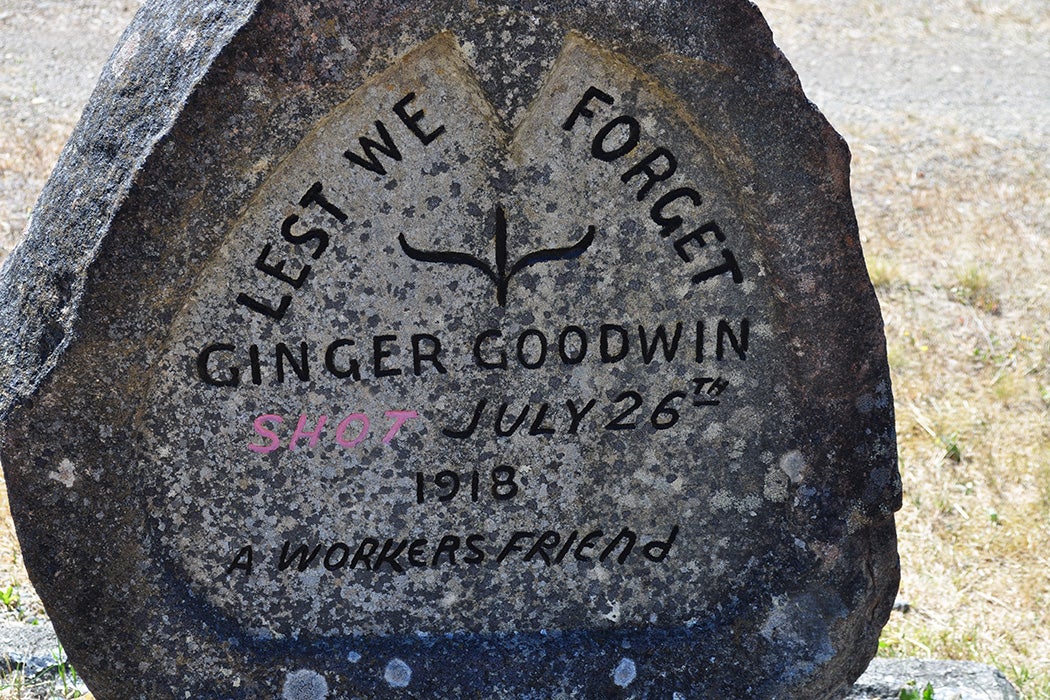In July 1918, the federal government of Canada ordered police to find Ginger Goodwin, a labor activist and coal miner. Wanted for outspokenness and refusal to comply with military conscription during World War I, Goodwin and several of his colleagues had disappeared into the bush on Vancouver Island.
Dominion Police Special Constable Dan Campbell found Goodwin near Cumberland, British Columbia. What happened next depends on whose account a person believes. Both Campbell and Goodwin carried guns. The two men surprised each other in the woods, and Campbell killed Goodwin, claiming he shot in self-defense.
“Controversy immediately swirled around this account. Many did not believe Campbell’s story, and he was charged with manslaughter,” Canadian historian Mark Leier writes. “A grand jury, however, determined that there was not enough evidence to bring Campbell to trial, and he was set free.”
Goodwin’s murder outraged labor organizers in Vancouver and other areas of British Columbia. Before his death, Goodwin had been a strong proponent of labor rights and frequently had spoken in favor of strikes. In reaction to the shooting, Canada had its first general strike, now popularly known as the 1918 Vancouver General Strike, in August of that year.
Even though Campbell claimed to have acted alone and in self-defense, conspiracy theories still emerged, with some people arguing there existed a greater plot to have this anti-war union leader killed, presumably by order of the federal government. That no one witnessed the shooting didn’t help dispel the rumors of darker forces at work.
One of the conspiracy theories proposed that Goodwin was shot with a dumdum bullet, which is “designed to expand or mushroom on impact and create wounds more deadly than those of a military bullet.” However, Leier points out that this is unlikely because such bullets were outlawed at the Hague Conventions of 1897 and 1907.
“Real dumdums would not likely be available to a policeman in Canada in 1918, and would not fit Campbell’s .30 calibre, non-military Marlin rifle,” he explains.
Other theories, including claims that Goodwin was shot at closer range than reported by Campbell, are not out of the realm of possibility. The doctor who performed Goodwin’s autopsy could have misinterpreted some findings, particularly when analyzing (alleged) powder burns.
“Only microscopic and other analysis can determine whether these different marks are caused by the powder of the weapon,” Leier writes. In short, the available forensic evidence can’t prove one way or another whether the two men were separated by six feet or sixty.
Weekly Newsletter
While conspiracy theories about Goodwin’s death may be interesting to some, Leier cautions that these may distract from real issues surrounding his death, such as concerns about military conscription, the cracking down on labor leaders, and the mechanics of power in a capitalist state.
“The conspiracy theory takes a short-cut through this analysis and blames not the system but a few villains,” Leier explains.
In recognition of his fight for labor, in 2018 the British Columbia government recognized July 27, the day Goodwin was killed, as Ginger Goodwin Day.
Support JSTOR Daily! Join our new membership program on Patreon today.







